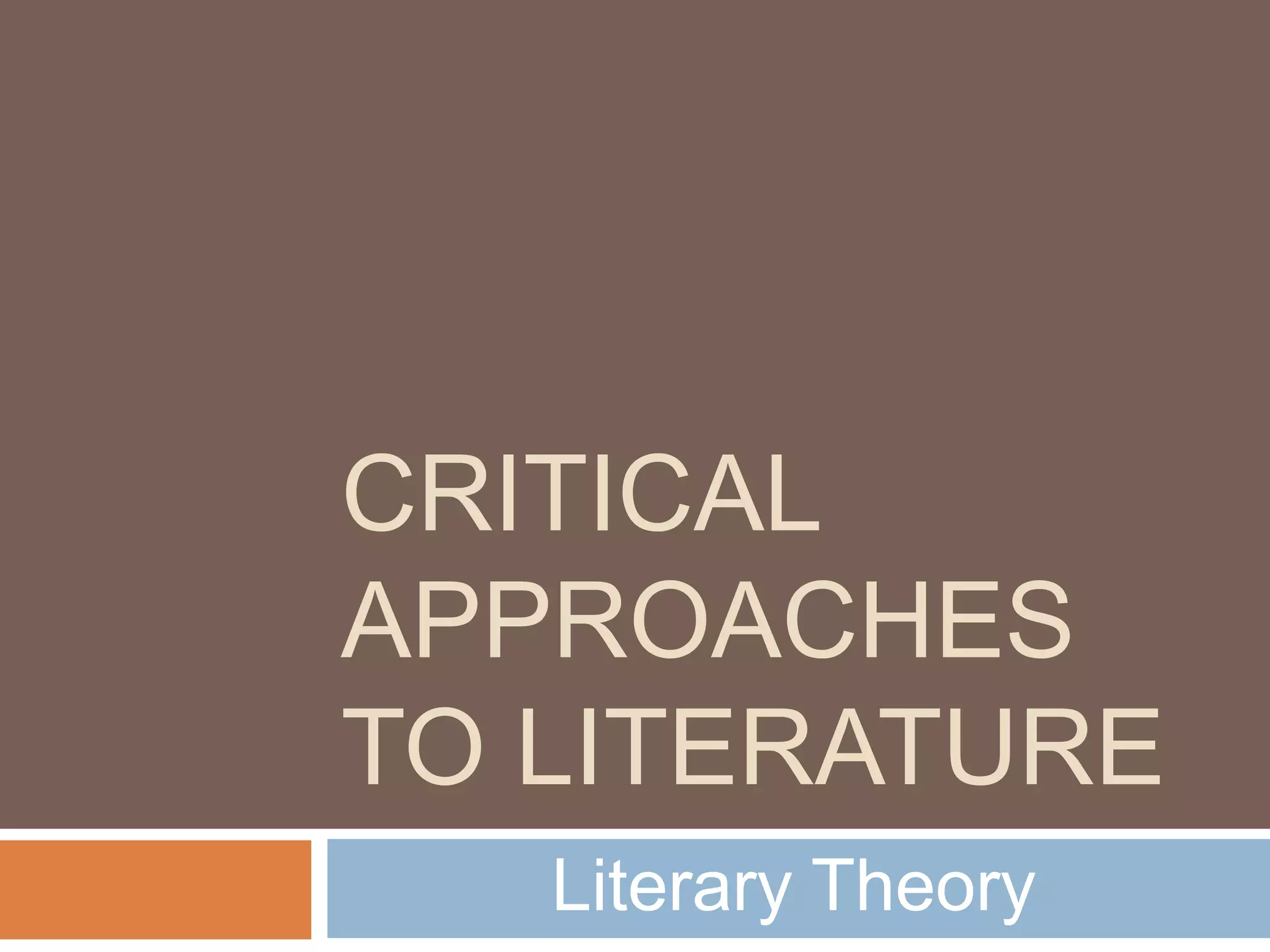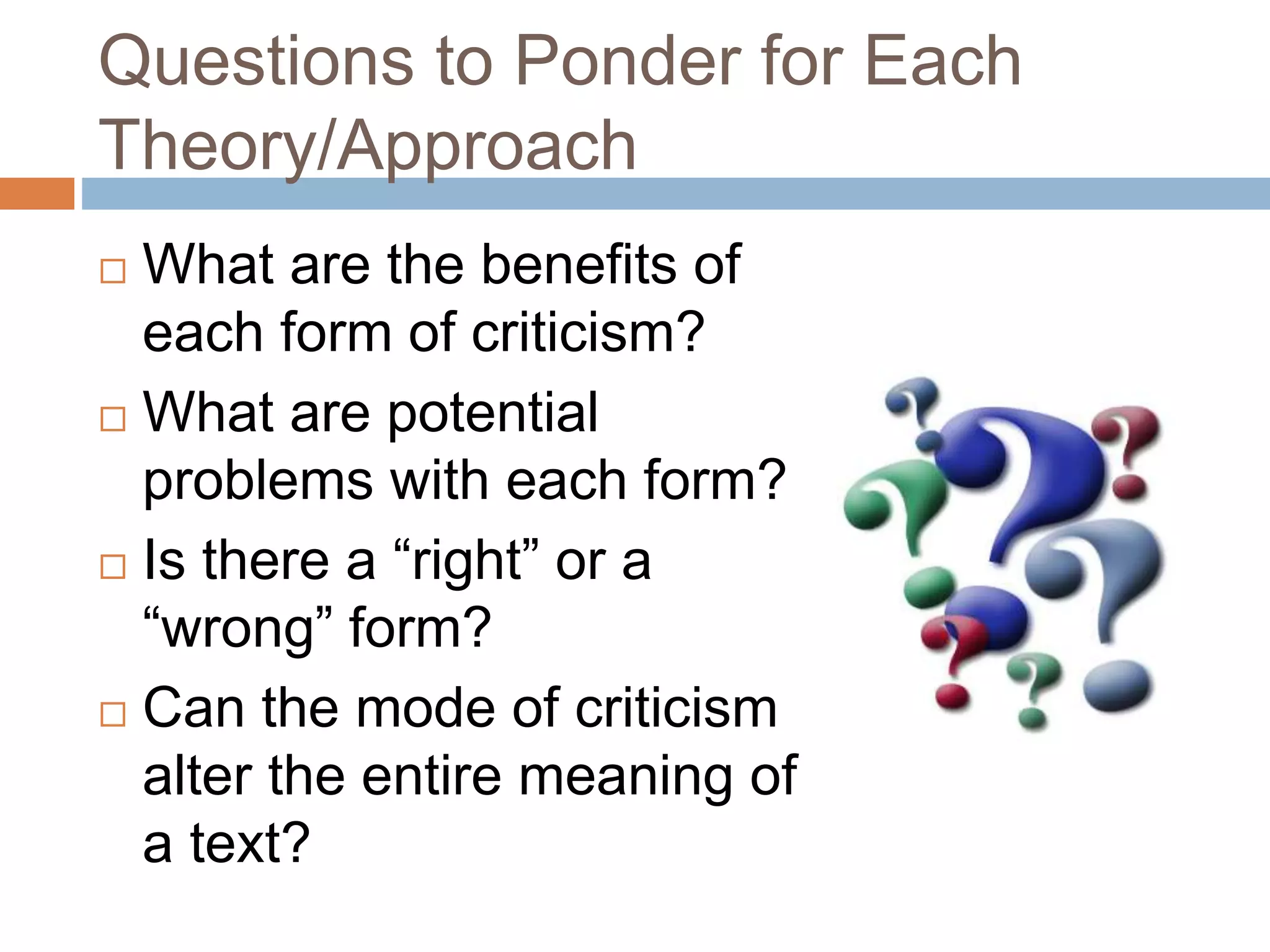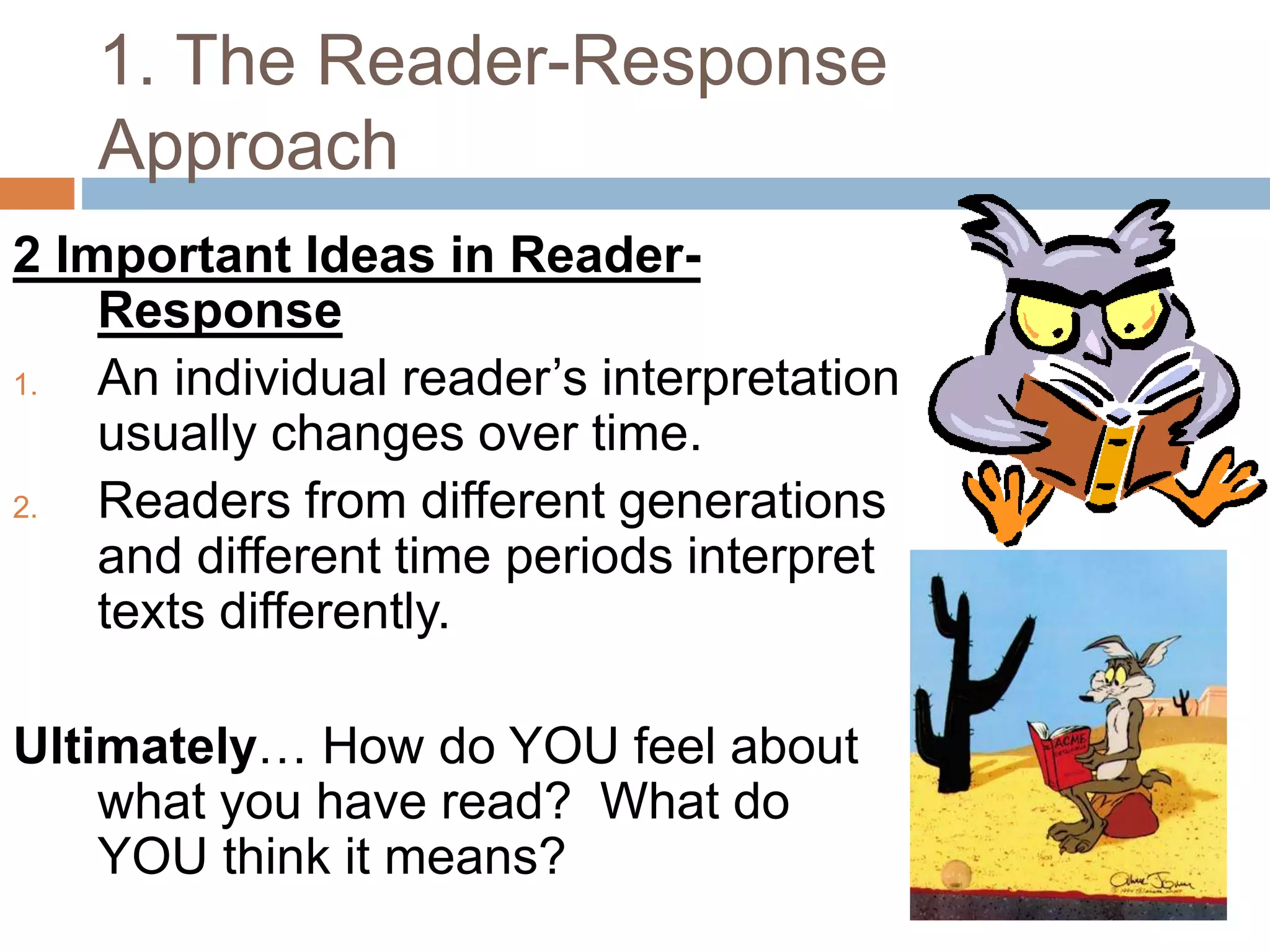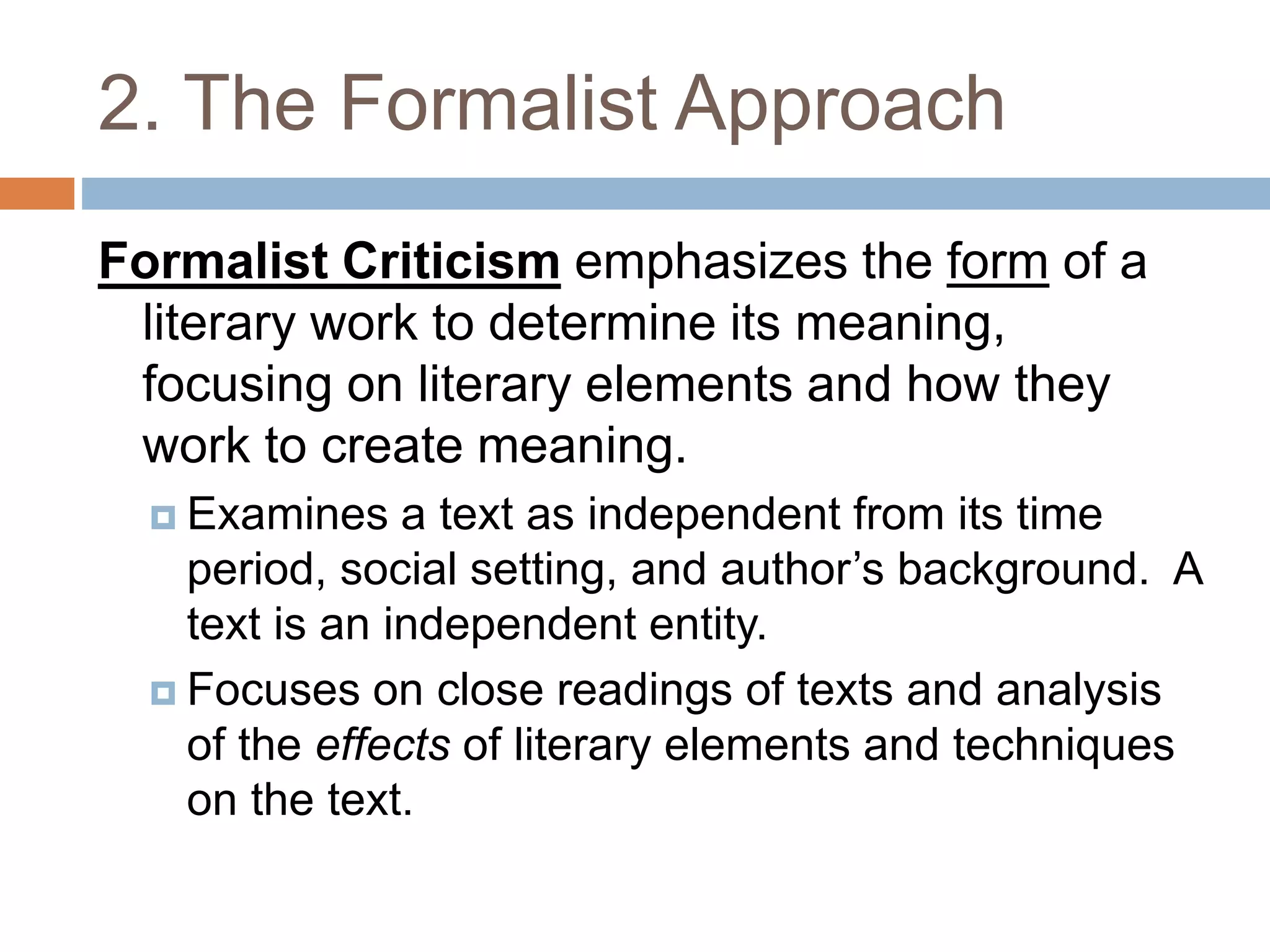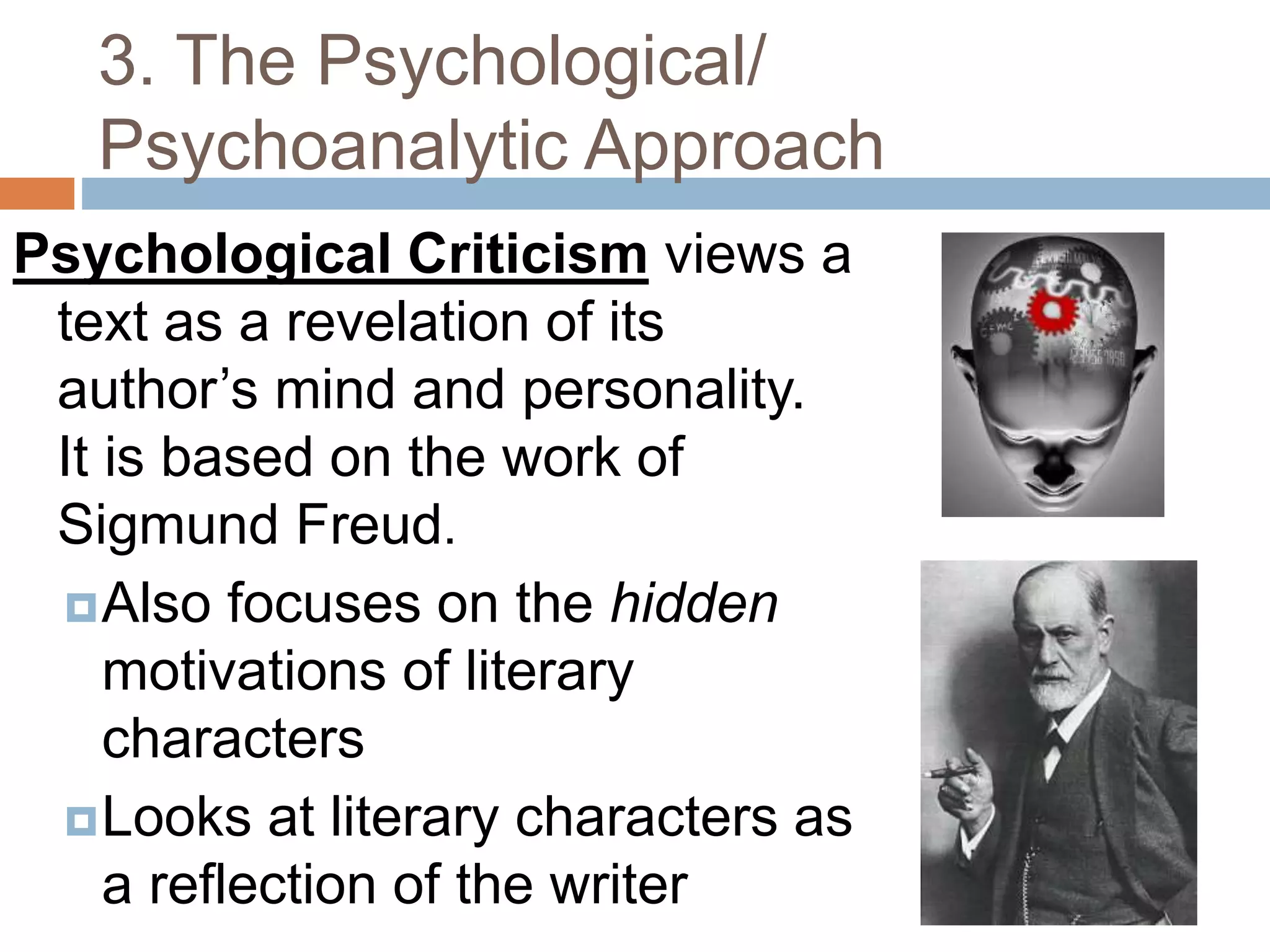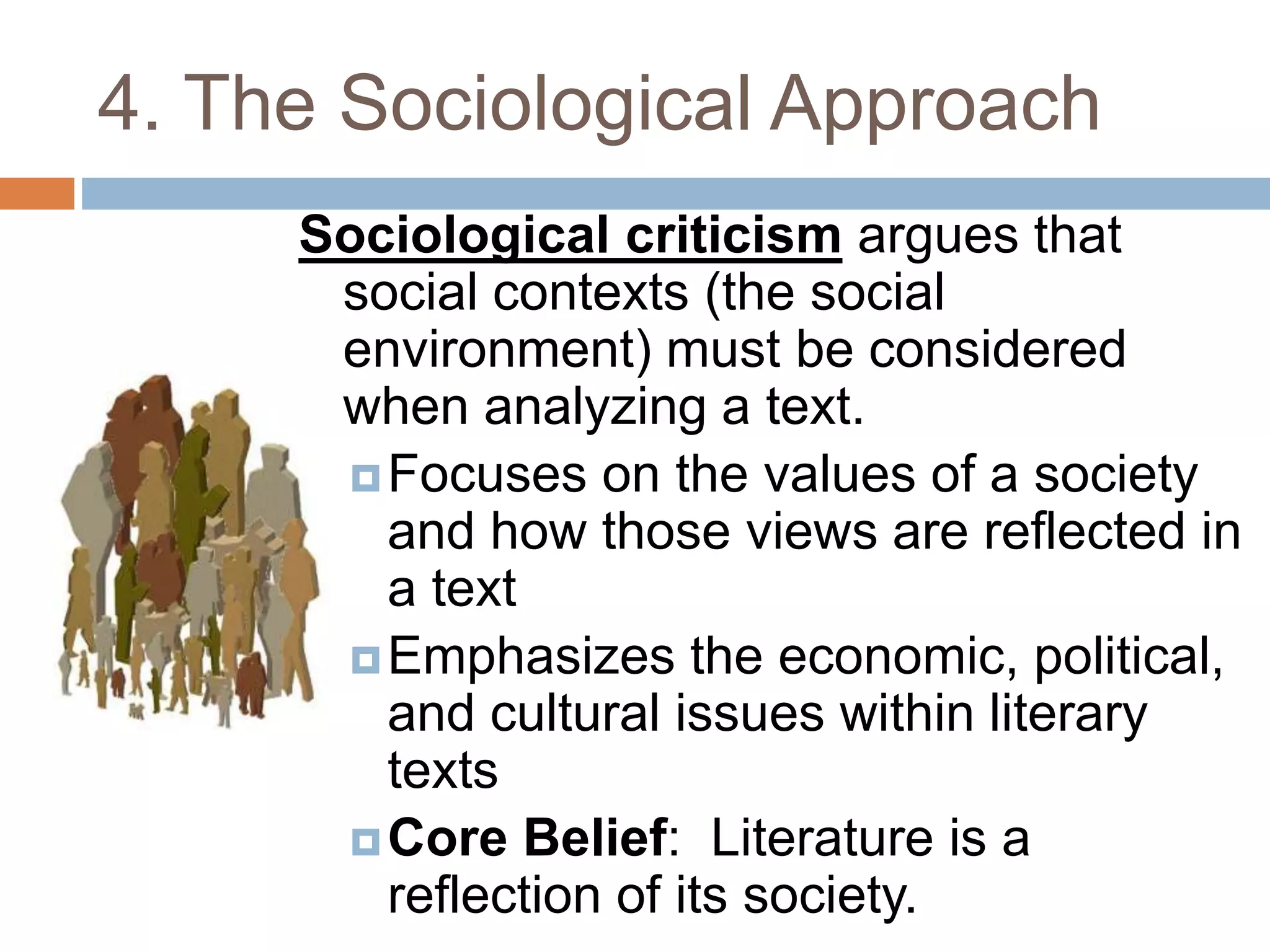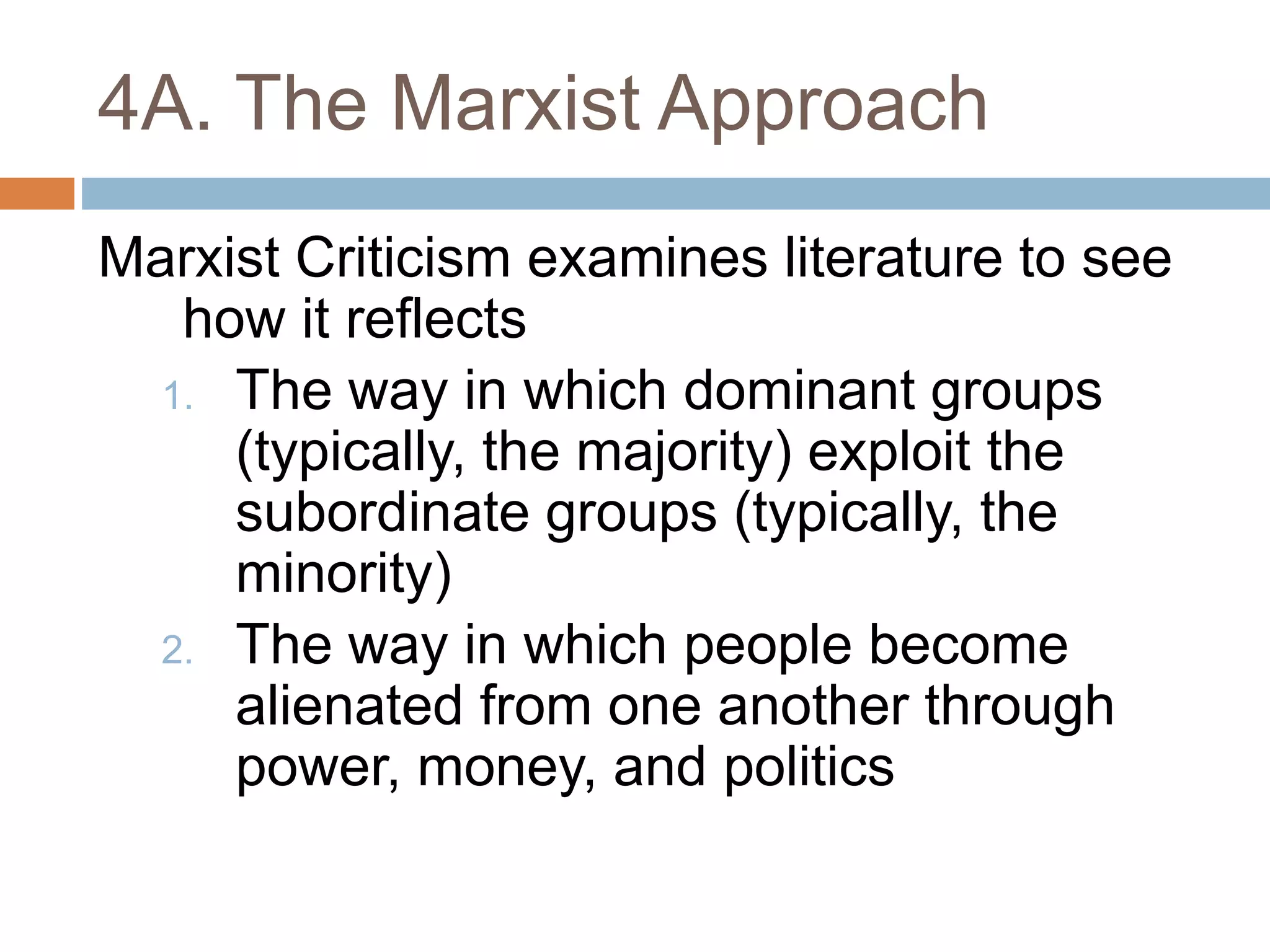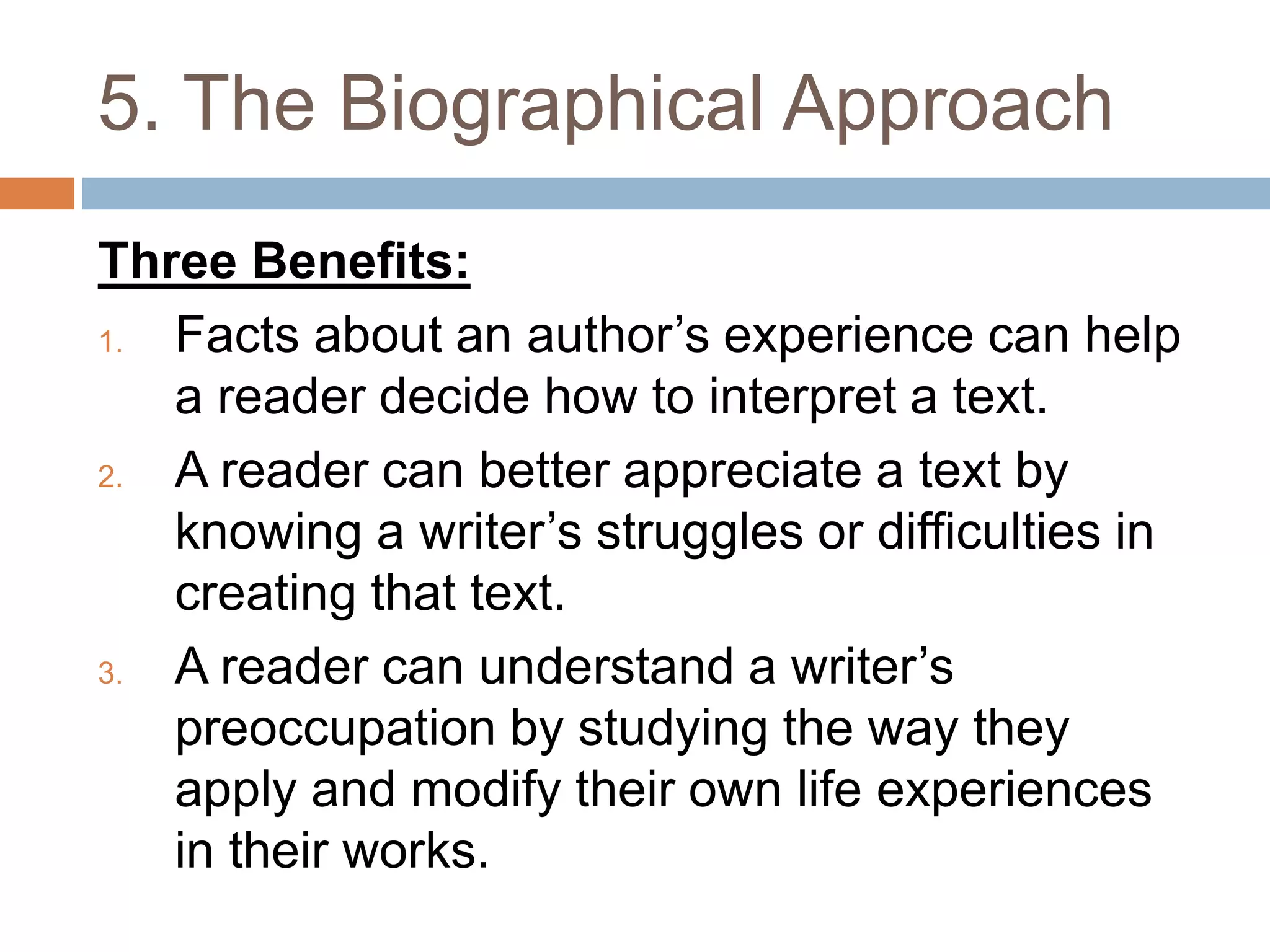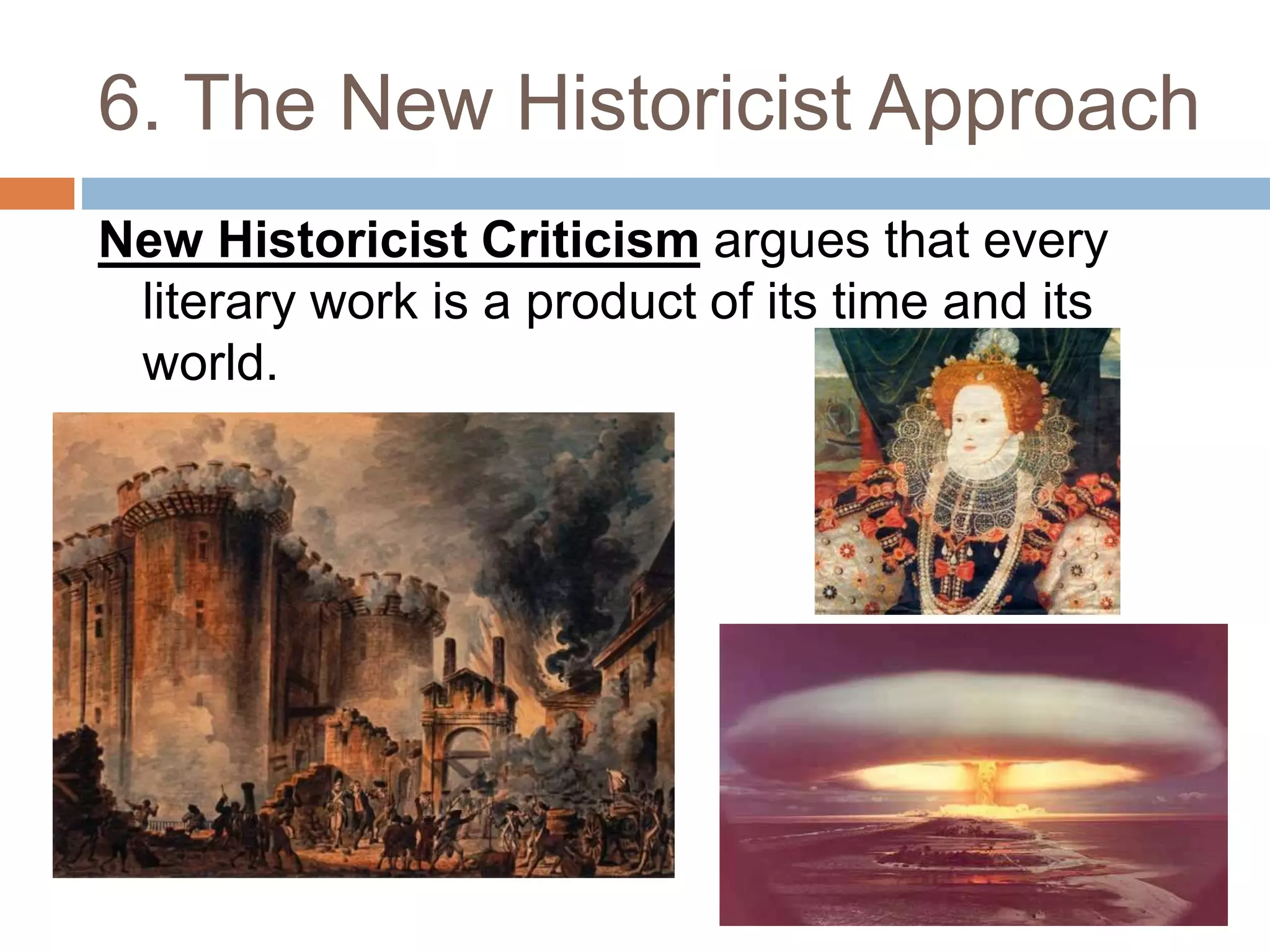This document introduces several critical approaches to studying literature, including reader-response criticism, formalist criticism, psychological criticism, sociological criticism (including feminist and Marxist approaches), biographical criticism, and new historicist criticism. Each approach provides a different lens for analyzing texts based on factors like the reader's experience, literary elements, author's background, social context, or historical period. The goal is to give deeper insight into what we read, why we read, and how we read using various critical perspectives.
